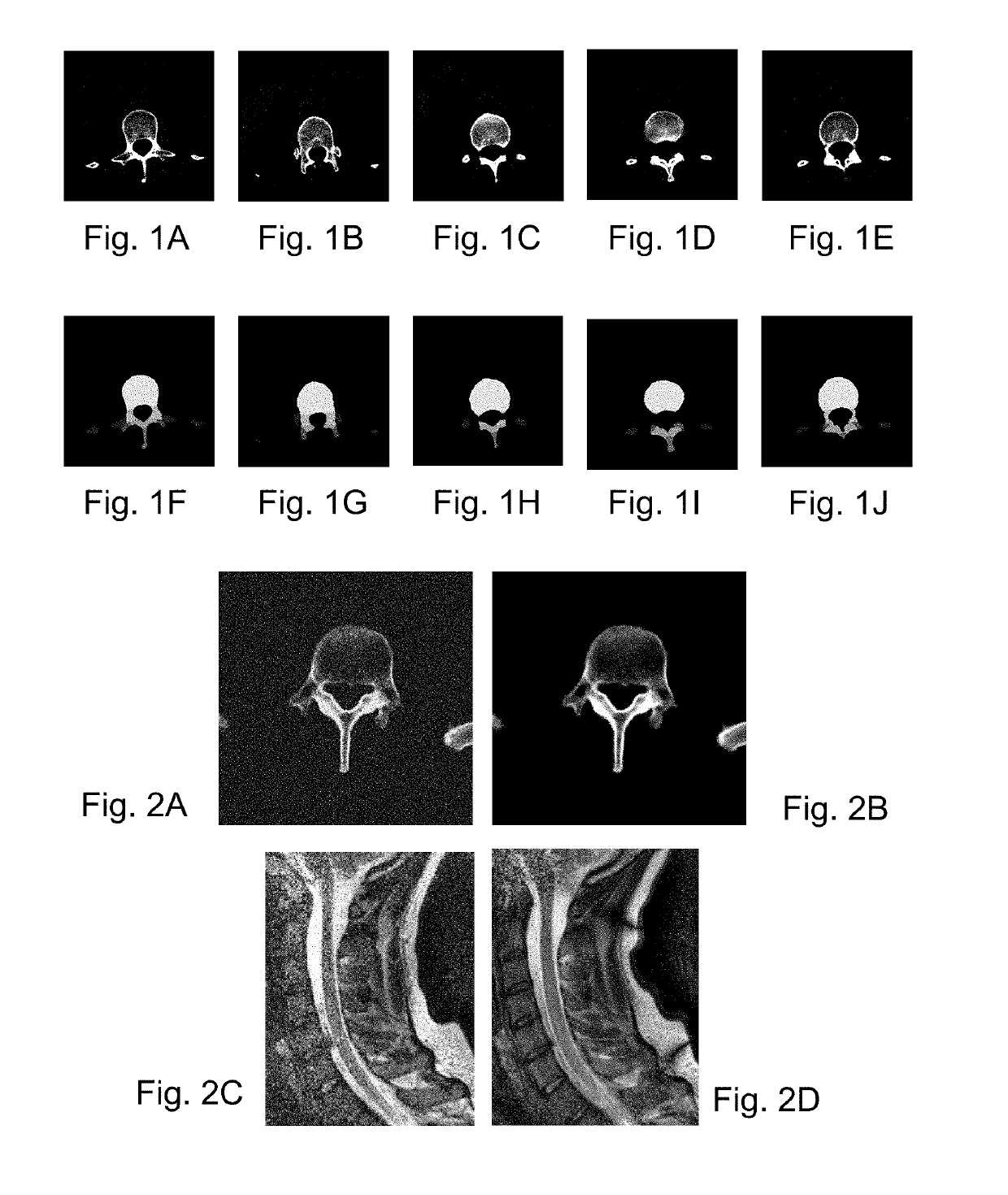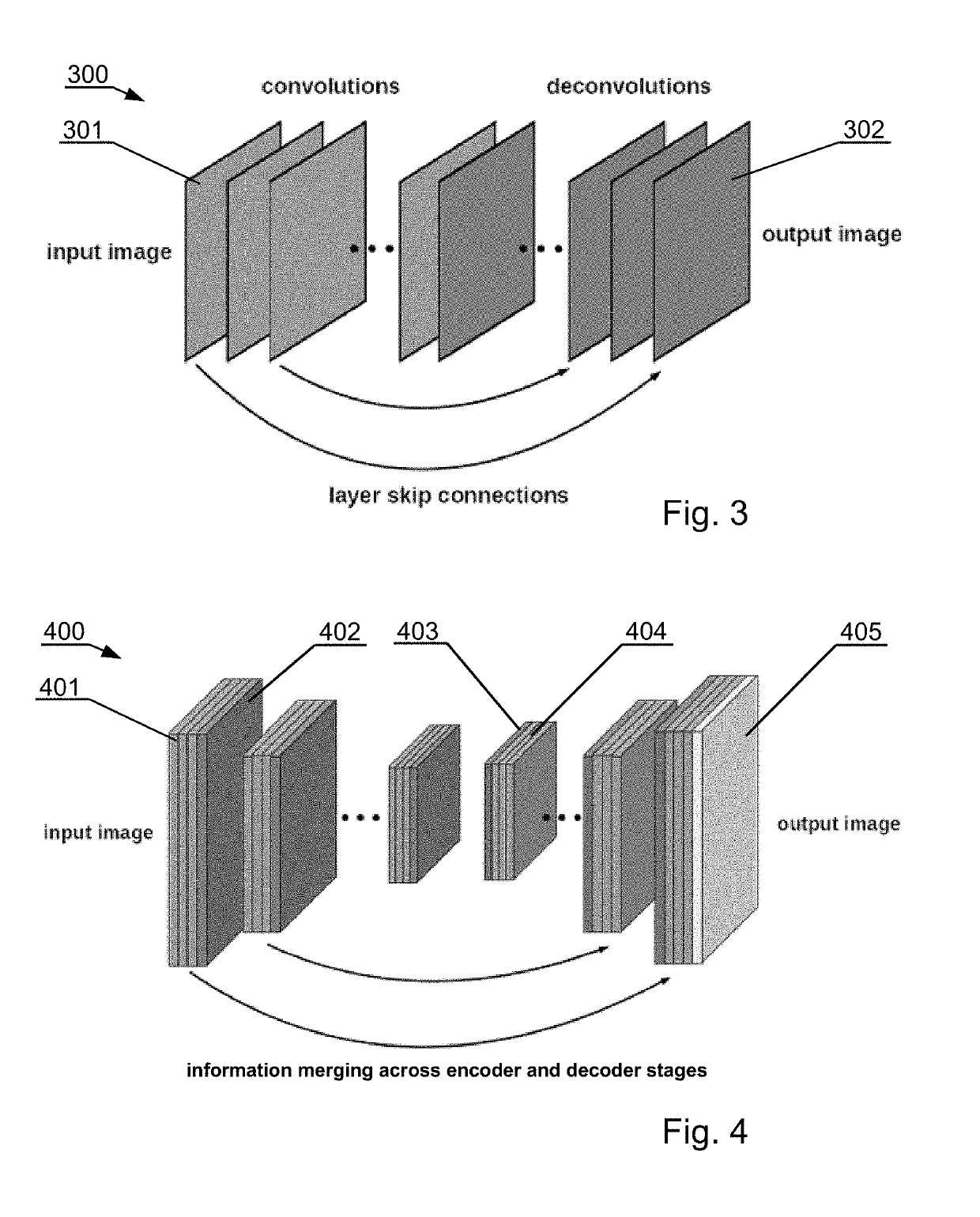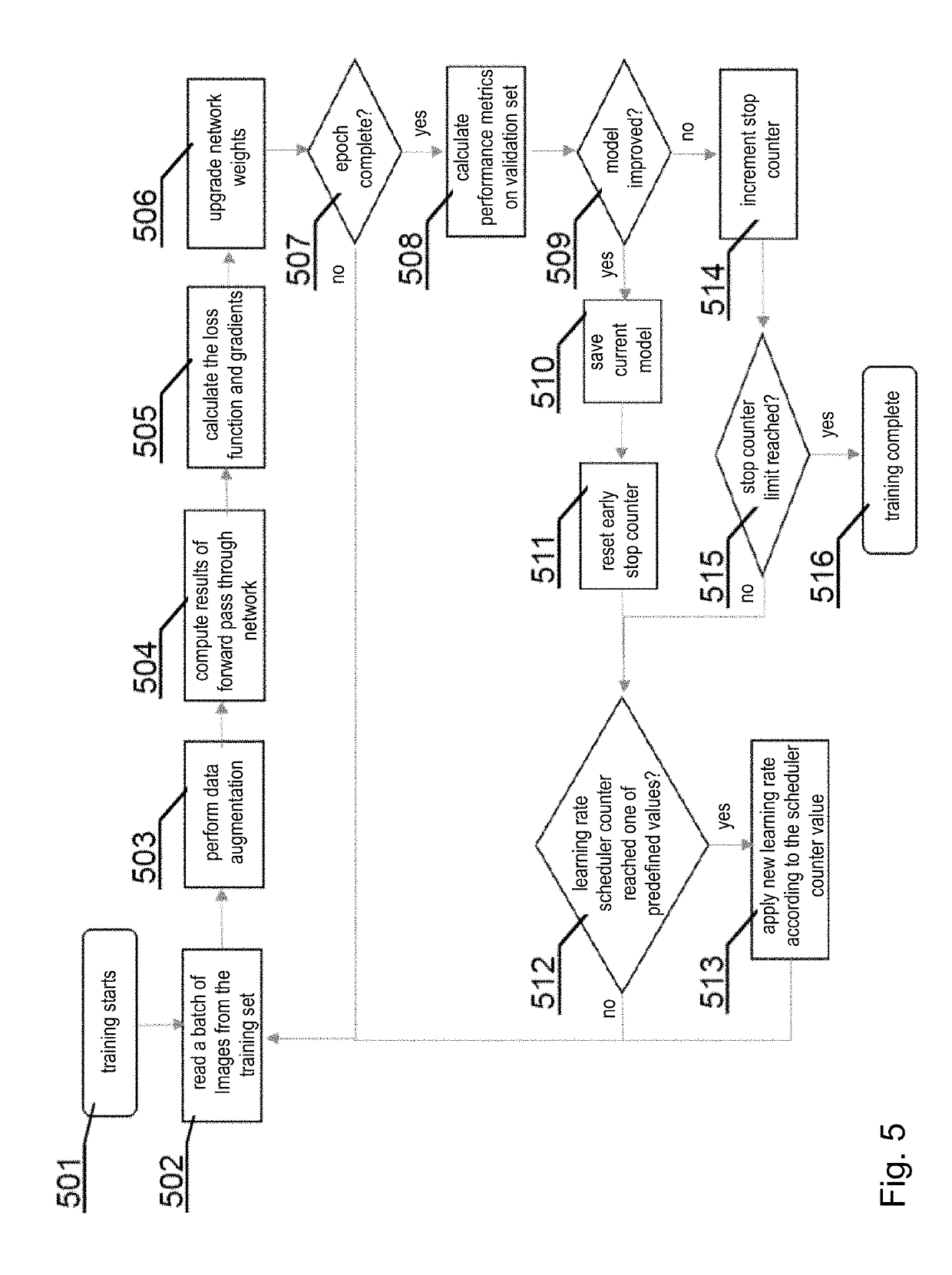Automated segmentation of three dimensional bony structure images
a three-dimensional image and automatic segmentation technology, applied in the field of automatic segmentation of three-dimensional images of a bony structure, can solve the problems of reducing the accuracy and efficacy of navigated tools and implants, difficulty in adequately addressing, and difficulty in using low-quality image datasets in machine learning applications
- Summary
- Abstract
- Description
- Claims
- Application Information
AI Technical Summary
Benefits of technology
Problems solved by technology
Method used
Image
Examples
Embodiment Construction
[0054]The following detailed description is of the best currently contemplated modes of carrying out the invention. The description is not to be taken in a limiting sense, but is made merely for the purpose of illustrating the general principles of the invention.
[0055]The invention relates to processing images of a bony structure, such as a spine, skull, pelvis, long bones, shoulder joint, hip joint, knee joint etc. The foregoing description will present examples related mostly to a spine, but a skilled person will realize how to adapt the embodiments to be applicable to the other bony structures as well.
[0056]Moreover, the invention may include, before segmentation, pre-processing of lower quality images to improve their quality. For example, the lower quality images may be low dose computer tomography (LDCT) images or magnetic resonance images captured with a relatively low power scanner. The foregoing description will present examples related to computer tomography (CT) images, b...
PUM
 Login to View More
Login to View More Abstract
Description
Claims
Application Information
 Login to View More
Login to View More - R&D
- Intellectual Property
- Life Sciences
- Materials
- Tech Scout
- Unparalleled Data Quality
- Higher Quality Content
- 60% Fewer Hallucinations
Browse by: Latest US Patents, China's latest patents, Technical Efficacy Thesaurus, Application Domain, Technology Topic, Popular Technical Reports.
© 2025 PatSnap. All rights reserved.Legal|Privacy policy|Modern Slavery Act Transparency Statement|Sitemap|About US| Contact US: help@patsnap.com



